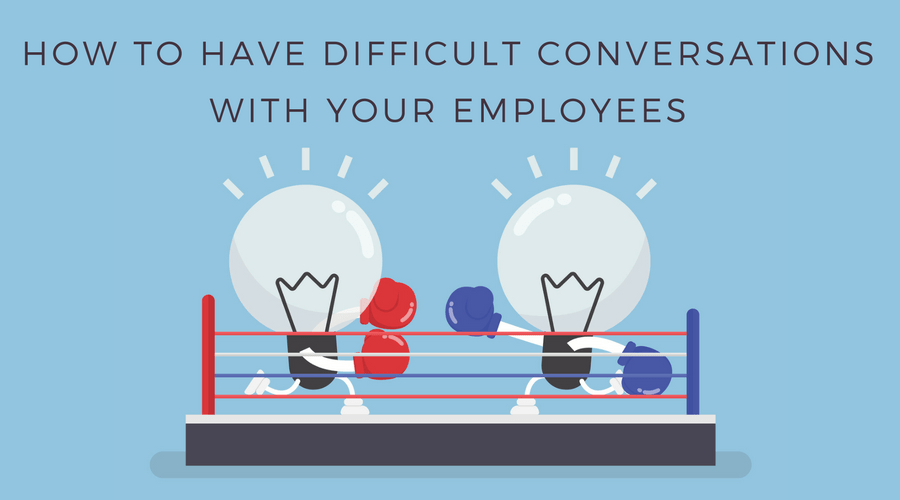Having Difficult Performance Conversations With Employees

The annual performance review. For many managers and employees, it’s a phrase that elicits anxiety, often representing a minefield of potential conflict and misinterpretation. While intended to foster growth and improve performance, these conversations frequently fall short, leaving both parties feeling frustrated and demotivated. The stakes are high: poorly handled performance discussions can damage morale, increase turnover, and ultimately impact the bottom line.
At the heart of the issue lies the inherent difficulty of delivering and receiving constructive criticism. This article explores the complexities of navigating difficult performance conversations, examining the common pitfalls, highlighting best practices, and offering strategies for fostering more productive and positive outcomes. We will delve into research on effective communication techniques and explore how organizations can create a culture that supports honest feedback and continuous improvement.
The Pitfalls of Performance Reviews
One of the primary challenges is the potential for subjectivity. Performance evaluations, especially those relying on subjective assessments, can be influenced by personal biases, leading to unfair or inaccurate judgments. This can create a sense of injustice, especially if employees perceive the evaluation criteria as vague or inconsistent.
Another pitfall is the timing of feedback. Many organizations rely on annual or semi-annual reviews, which means that crucial issues might go unaddressed for extended periods. This delayed feedback can make it difficult for employees to correct course and improve their performance.
Furthermore, focusing solely on weaknesses can be detrimental. A performance review that dwells excessively on shortcomings, without acknowledging strengths and contributions, can damage an employee's confidence and motivation. Research from the Society for Human Resource Management (SHRM) suggests that a balanced approach, emphasizing both strengths and areas for development, is more effective.
Best Practices for Effective Communication
To mitigate these pitfalls, organizations should prioritize clear and consistent communication. Establishing transparent performance expectations from the outset is crucial. Employees need to understand what is expected of them and how their performance will be measured.
Regular, informal feedback sessions are also essential. Instead of waiting for the annual review, managers should provide ongoing feedback, both positive and constructive, to help employees stay on track and address issues promptly. This creates a culture of continuous improvement and reduces the element of surprise during formal reviews.
Active listening is a critical skill for managers. During performance conversations, it’s important to listen attentively to the employee's perspective, ask clarifying questions, and acknowledge their concerns. This demonstrates respect and helps to build trust, making the conversation more productive.
The Power of Specific Examples
Vague feedback is often ineffective. Instead of saying "your communication skills need improvement," provide specific examples of situations where communication could have been more effective. For instance, "During the client presentation last week, you could have been more concise and focused on the key takeaways."
Specific examples help employees understand exactly what they need to change and provide a concrete basis for improvement. This eliminates ambiguity and reduces the likelihood of misinterpretation.
Focusing on Behavior, Not Personality
It's crucial to frame feedback in terms of behavior, not personality. Avoid making judgments about an employee's character or traits. Instead, focus on their actions and their impact on the team or the organization.
For example, instead of saying "you're lazy," try "I've noticed that you've been missing deadlines lately, which is impacting the team's ability to complete the project on time." This approach is less confrontational and more likely to lead to a productive discussion.
Creating a Culture of Feedback
The effectiveness of performance conversations is heavily influenced by the organizational culture. A culture that encourages open communication and values feedback is more likely to foster growth and improve performance. This involves creating a safe space where employees feel comfortable sharing their thoughts and concerns without fear of retribution.
Organizations can also invest in training for both managers and employees on effective communication and feedback techniques. This can equip them with the skills and knowledge needed to navigate difficult conversations constructively.
Implementing 360-degree feedback can provide a more comprehensive view of an employee's performance. This involves gathering feedback from peers, subordinates, and supervisors, offering a more well-rounded perspective and reducing the potential for bias. The Harvard Business Review has consistently highlighted the benefits of well-implemented 360-degree feedback programs.
Looking Ahead
The future of performance management is likely to involve more frequent, informal feedback and a greater emphasis on continuous development. Companies are moving away from traditional annual reviews in favor of ongoing conversations that focus on coaching, mentoring, and skill development.
Technology is also playing an increasingly important role. Performance management software can help to track progress, provide real-time feedback, and facilitate communication between managers and employees. By embracing these trends, organizations can create a more effective and engaging performance management system that supports both individual and organizational growth.
Ultimately, successful performance conversations are about building trust, fostering open communication, and creating a culture of continuous improvement. By focusing on these principles, organizations can transform performance reviews from a dreaded chore into a valuable opportunity for growth and development.






.webp?width=1200&height=800&name=how-to-have-difficult-conversations-with-employees (1).webp)











